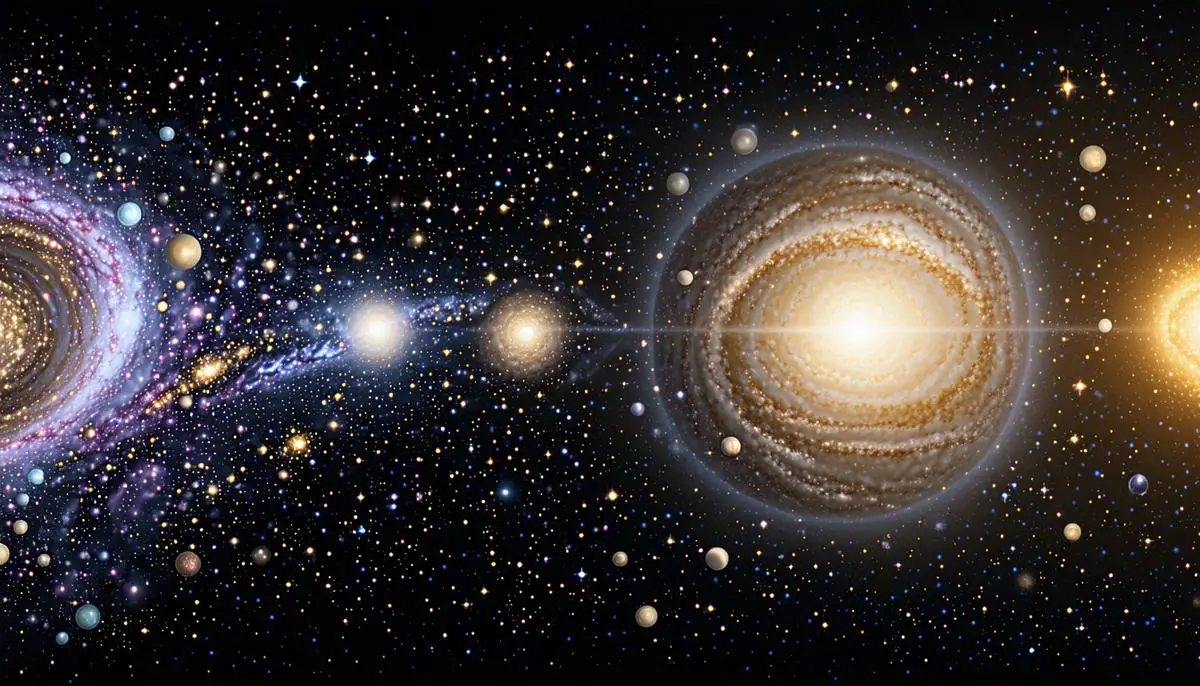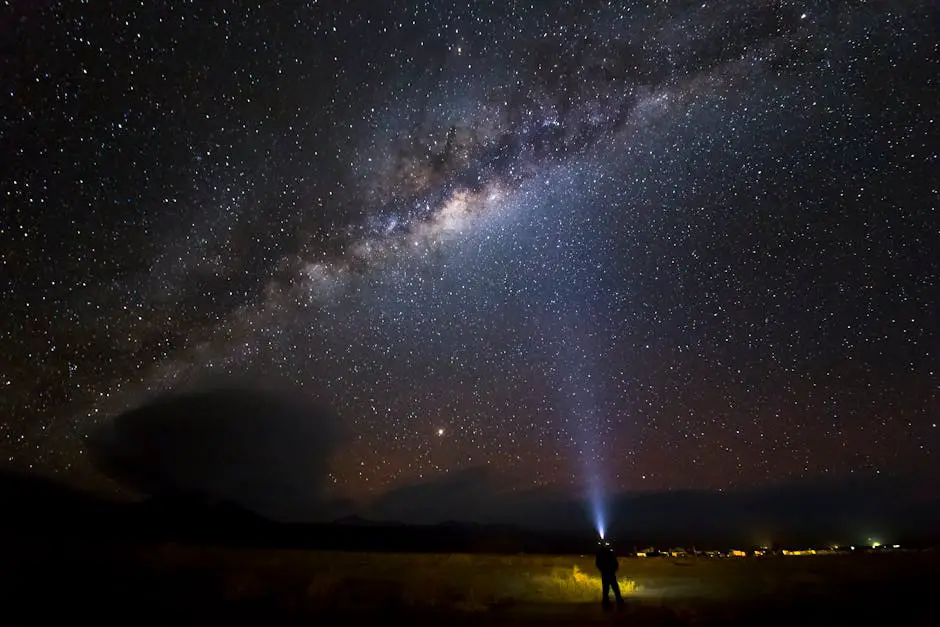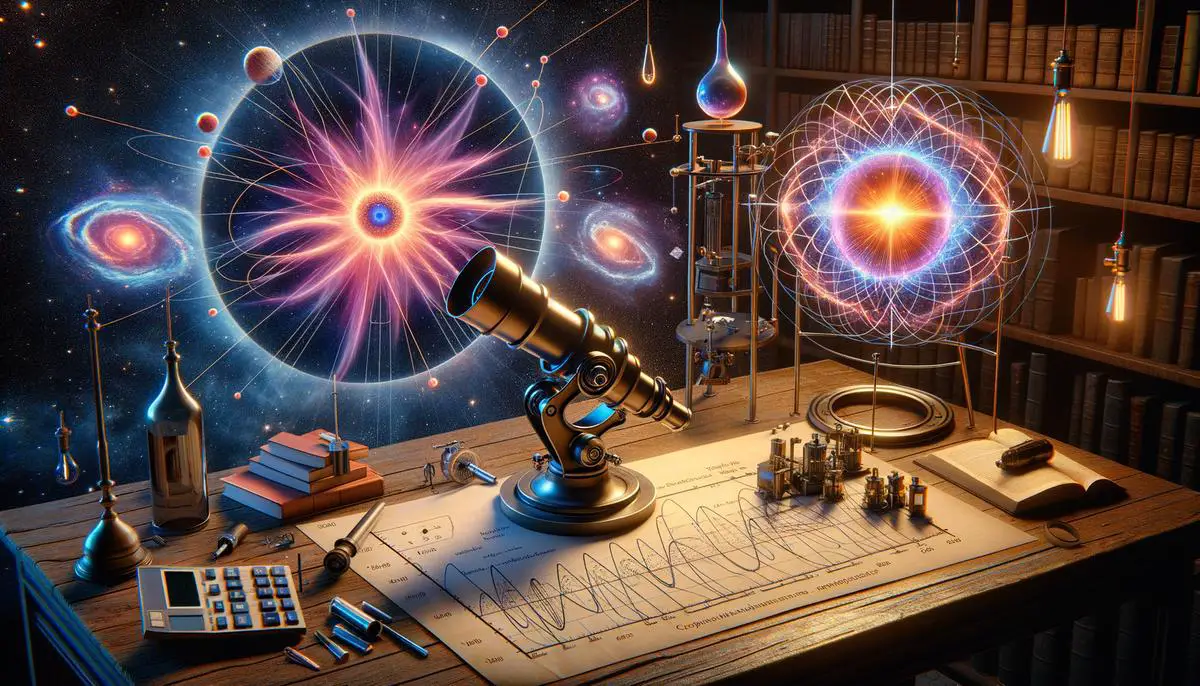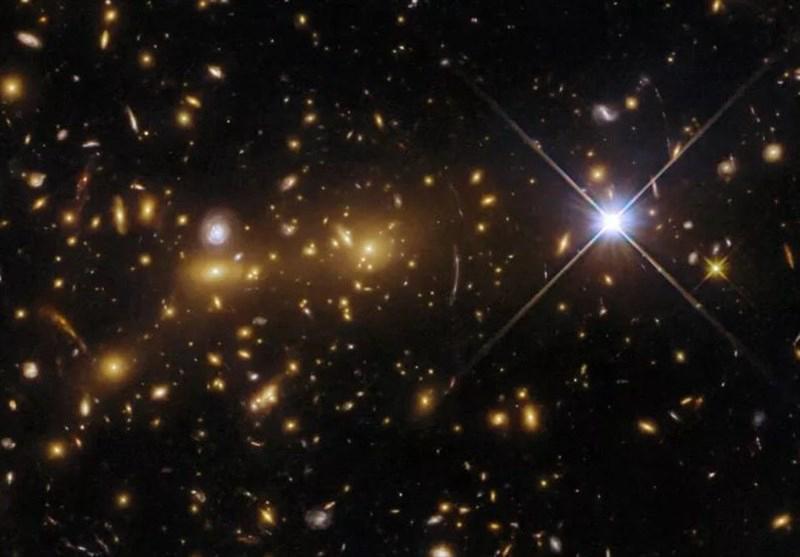Understanding Cosmic Scale
Examining the vastness of the universe reveals a spectrum from the infinitesimal to the immense. At the smallest scale, subatomic particles like quarks compose protons and neutrons, with sizes less than 10-15 meters. The theoretical Planck length at 10-33 meters marks the limit of our current understanding.
Shifting perspective, we encounter everyday objects before moving to celestial bodies. Our Milky Way galaxy is part of the Local Group, spanning 10 million light-years. The Andromeda Galaxy, 2.5 million light-years away, appears six times the size of the full moon in our sky. Further out, the Hercules Galaxy Cluster resides 500 million light-years away, containing about 200 galaxies.
To comprehend cosmic distances, we use light-years—the distance light travels in one Earth year, approximately 10 trillion kilometers. The observable universe spans an estimated 93 billion light-years, highlighting the vast scale of our cosmic environment.
Through scientific exploration, we strive to understand these immense scales, finding our place within the universe's complex structure.

The Smallest and Largest Entities
At the microscopic frontier, quarks and neutrinos serve as fundamental building blocks of matter. Quarks form protons and neutrons, while elusive neutrinos pass through space almost undetected. The Planck length, at 10-33 centimeters, represents the theoretical smallest scale where traditional physics breaks down.
On the opposite end, superclusters of galaxies reign as the largest known structures. The Laniakea Supercluster, home to our Milky Way, encompasses over 100,000 galaxies across 520 million light-years. These colossal assemblies, connected by dark matter, shape the cosmic landscape.
The observable universe, spanning 93 billion light-years, contains countless galaxies, nebulae, and clusters. This visible portion represents only a fraction of the total universe, leaving much to explore beyond our cosmic horizon.
By studying these extremes, from the quantum realm to cosmic superclusters, we piece together insights about the universe's diverse composition and structure.

Human Perspective in the Cosmic Scale
In the context of the universe, humans occupy a minuscule space. Our planet orbits a single star within the vast Milky Way, which itself is part of a local group among countless superclusters. This realization can be both humbling and awe-inspiring.
Our cosmic insignificance, however, does not diminish the importance of human endeavors. Rather, it fuels our curiosity and drive to understand the universe. Throughout history, we've developed tools and theories to explore the cosmos, from early telescopes to modern space probes.
"The size and age of the Cosmos are beyond ordinary human understanding. Lost somewhere between immensity and eternity is our tiny planetary home."
Understanding our place in the universe also emphasizes our responsibility as Earth's stewards. Recognizing our planet's uniqueness in supporting life, we're compelled to care for it and future generations. This perspective encourages unity among Earth's inhabitants and promotes efforts towards sustainability and harmony with our environment.
Contemplating the cosmos invites us to transcend borders and divisions, recognizing our shared experience in the universe. It challenges us to find meaning and purpose within the vast expanse of space and time, encouraging us to cherish our brief but significant role in the ongoing cosmic narrative.

Measuring Distances in Space
Astronomers employ specialized units to quantify the vast distances in space. The astronomical unit (AU), defined as the average distance between Earth and the Sun (about 93 million miles or 150 million kilometers), is useful for measuring distances within our solar system.
For greater cosmic distances, the light-year becomes the standard unit. It represents the distance light travels in one Earth year, approximately 5.88 trillion miles or 9.46 trillion kilometers. This unit effectively expresses the span between stars and galaxies.
Measuring these immense distances presents challenges. Parallax, which gauges a star's apparent position shift against distant stars, works well for nearby celestial objects but becomes less effective for more remote ones. To overcome this limitation, astronomers use standard candles—celestial bodies with known luminosities, such as:
- Cepheid variable stars
- Type Ia supernovae
These objects help estimate distances by comparing their intrinsic and observed brightness.
Redshift, the stretching of light to longer wavelengths as galaxies move away, provides another tool for measuring cosmic distances. By relating a galaxy's redshift to its velocity, astronomers can map galaxies billions of light-years away, offering insights into the universe's expansion and structure.
These methods of cosmic measurement showcase human ingenuity in unraveling the universe's vast dimensions, helping us understand our place within its intricate design.

Galaxies and Their Distances
Galaxies serve as crucial landmarks in mapping the universe's expanse. The Andromeda Galaxy, our nearest large galactic neighbor, lies 2.5 million light-years away. Its proximity allows detailed study and provides insights into the future merger with our Milky Way.
The Virgo Cluster, about 50 million light-years distant, contains over a thousand galaxies, offering opportunities to observe galactic interactions and star formation processes. Further out, the Hercules Galaxy Cluster, 500 million light-years away, provides a window into the universe's past due to the time light takes to reach us.
| Galaxy Cluster | Distance (light-years) | Notable Features |
|---|---|---|
| Andromeda | 2.5 million | Nearest large galaxy |
| Virgo Cluster | 50 million | Over 1,000 galaxies |
| Hercules Cluster | 500 million | About 200 galaxies |
As we observe more distant galactic clusters, we gain insights into the universe's expansion and evolution. These observations reveal the cosmic web—the large-scale structure of the universe shaped by gravity and dark matter.
By mapping galaxies across vast distances, astronomers piece together the universe's history and structure. This cosmic cartography continues to expand our understanding of the universe's mechanics and our place within it, driven by humanity's enduring curiosity about the cosmos.

In exploring the universe's vastness, from subatomic particles to galactic superclusters, we gain perspective on our cosmic context. This journey of discovery not only advances our scientific understanding but also highlights our connection to the cosmos and our responsibility to our planet. As we continue to unravel cosmic mysteries, we deepen our appreciation for the intricate structure of the universe and our unique place within it.
- Sagan C. Cosmos. Random House; 1980.
- Tyson ND, Goldsmith D. Origins: Fourteen Billion Years of Cosmic Evolution. W. W. Norton & Company; 2004.
- Hawking S. A Brief History of Time. Bantam Books; 1988.
![]()
